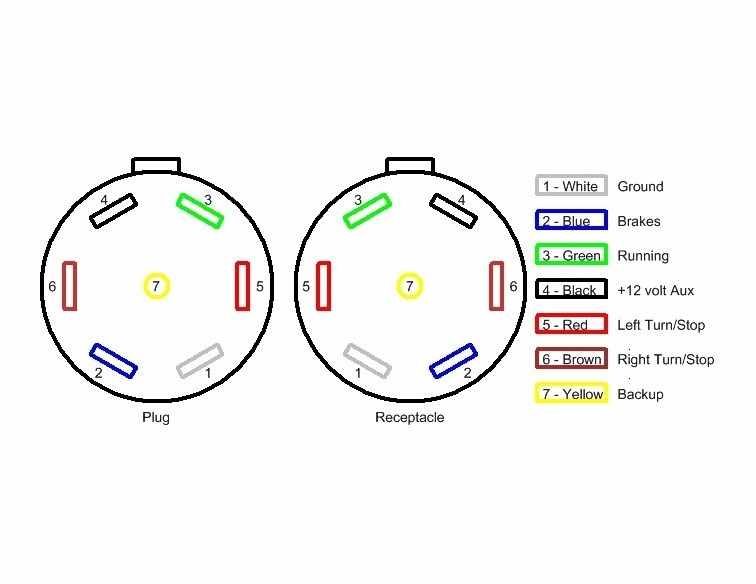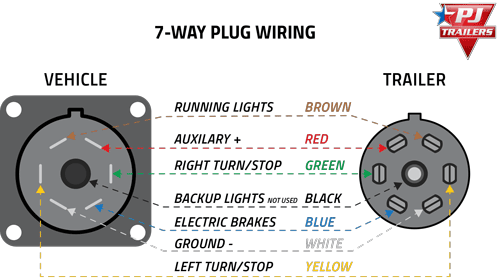
Trailer plugs diagrams license#
In this case, the brown wire is used for the tail lights, the license plate light, and the side marker lights. The standard trailer plug and socket design is a color coded system using four wires. When it comes to trailer wiring and harness plugs, there are several to choose from in a wide variety of sizes and configurations. If you find that you have a car that's too old or a trailer that has a mess of wires, you may need to bring your vehicle in for some help from a mechanic. When that time comes, simply pull it out and close the trunk on top of the wire - you won't do any damage to the system. You can just keep the plug and wire stowed under your trunk storage space alongside your spare and jack until you need it for towing. The plug that you'll attach to your trailer will have several feet of wire. Just drill a hole into the metal base of your trunk and drive a screw through the loop to attach it to your car. It will probably be a ground with a metal loop at the end. Then simply attach the ground wire to some metal. Do the same thing on the other side, and you'll be wired for towing your trailer. All you need to do is unplug it from the light, plug your T-harness in and then plug the car's original set of wires into the newly installed trailer harness. This comes directly from your car's electrical system. Once you have access to the taillights, you'll notice the wiring plug leading into it. Some SUVs won't have access to the light from the trunk, so you'll have to remove the entire taillight housing with a screwdriver. You need to remove this as well - it most likely pops out and snaps back into place pretty easily. There may also be a piece of molded plastic that shields the taillight from the rest of the trunk. Lift up the carpet in the rear and you'll find a storage area where your spare tire and jack are most likely kept. If you have a wagon, you can do so by simply looking under your trunk. What you want to do here is access the rear taillights of your vehicle from the inside. Once you have the right T-connector for your vehicle, it's simply a matter of plugging it all in. This is accomplished by wiring the vehicle to the trailer.


Just like your car or truck's brake and signal lights must be in working order, so should your trailer's lights. is that the trailer must be wired to the vehicle. The one common denominator for each state in the U.S. Thanks, Dad.Įach state has its own set of towing laws and regulations, from size limits to weight restrictions. The wife and kids stare daggers into your head as you curse your way through hours of agonizing wiring mishaps. Your trailer wiring plug doesn't match the one on your vehicle. All goes well with the hookup, but when it comes time to wire your trailer to your truck, things get a little iffy. All you need to accomplish as the head mechanic in the family is to hook your SUV to your boat trailer and hit the road. The wife has the food packed and ready, and the kids are slathered in sunscreen, eager for some water-skiing. You bought your nifty sports utility vehicle (SUV) and your boat and trailer, and you're ready for a weekend on the lake.


 0 kommentar(er)
0 kommentar(er)
